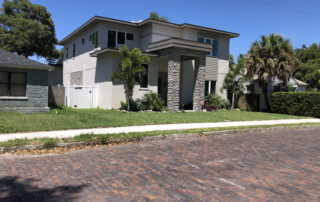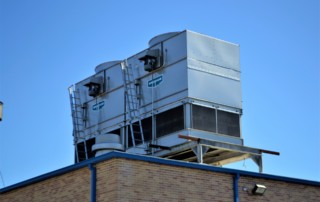“There is no safe place on a roof.”
These words from OSHA may ring true to many, but the fact is – there are many reasons why people may be on a roof, especially a commercial rooftop. Whether construction workers finishing the project, maintenance workers checking on the air handlers – or in the Venice area, even tenants and guests enjoying a rooftop pool with a view – the roof is often accessible.
It is the responsibility of the owner of the property to safeguard the people who may be on the roof of their building, and commercial rooftop railing systems is one way to do so.
Dangers of Being on a Commercial Rooftop
For people working on a roof, there are many inherent dangers. Because they tend to be absorbed in their work, they can lose where the roof edge is, or trip over a roof penetration such as a vent or skylight. The roof pitch and stability will come into play when determining the levels of safety measures which need to be in place when maintenance or construction workers are on the roof.
Popular commercial rooftop railing systems tend to be portable and reusable, and they are designed to not penetrate the roof membrane. With weighted or leveraged bases to keep the poles in place, the railing systems can provide maximum protection without any damage to the roof, especially important if the work areas often change. Even if you wish to permanently safeguard the edges of your roof, non-penetrating systems are a smart choice to minimize the risk of any leaks or water intrusion which is a possibility anytime the roof membrane is penetrated.
Any roof access hatches should be surrounded with a railing system, especially when the hatch is open. These railing provide stability and a grab-hold for people climbing in and out of the roof hatch, and also prevents anyone from falling into the hatch if they trip or slip.
When Guests are on the Roof
A parapet is a barrier which is an extension of the wall at the edge of a roof, terrace, balcony or elevated walkway. Roof parapet railings are barriers installed permanently on the concrete roof edge. These types of railings are common when you have a rooftop accessible by the general public, such as a viewing deck.
If people will routinely be on your commercial rooftop, it is best to design a roof with multiple layers of protection. For instance, there could be a wide gap between where they walk and the edge of the roof, meaning no one could inadvertently fall. Both the inner and outer edges should be protected by railings and barriers. You may also wish to build a wide ledge one floor below the rooftop, so that anything that fell off the roof would land on the ledge. Any structural constructs meant to prevent a fall should still be reinforced with railings, fences and barriers. Commercial rooftops may also feature tall glass (or plexiglass) walls around the edges of the rooftop to preserve the view but prevent any injury.
OSHA Requirements
OSHA’s requirements for guardrails include the following guidelines:
* The top rail is 42″ tall from the walking surface.
* The middle rail is half way between the top rail and the walking surface.
* The rail is able to withstand a 200 lb. force in a downward or outward direction.
If you have a Venice commercial building and are looking for ways to increase safety and reduce your liability, call the experts at [company_name]. We can help you to decide between permanent and temporary rooftop railing systems, and to ensure your commercial rooftop is safe and secure for everyone.




